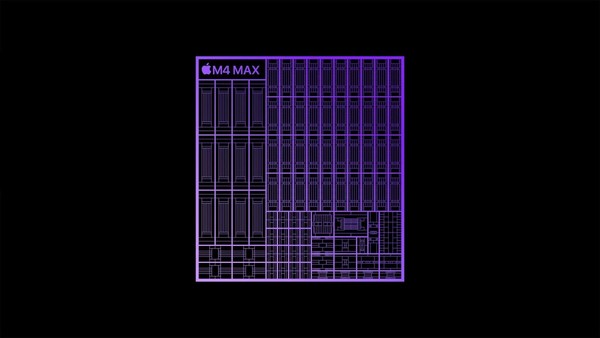Apple has officially unveiled its most powerful processor to date, the Apple M4 Max, a game-changing addition to the M4 series. This high-performance chip is designed to meet the demands of users requiring exceptional power, with a 16-core CPU and a 40-core GPU. However, what truly sets the M4 Max apart is its groundbreaking memory bandwidth of 546GB/s—the first time a non-Ultra version has exceeded the 500GB/s threshold.
This remarkable leap in memory performance establishes a new standard for Apple’s processors, offering enhanced speed and efficiency for professional workloads, gaming, and creative applications. The Apple M4 Max memory bandwidth has elevated the expectations of what non-Ultra processors can deliver, bringing it to the forefront of technological innovation.
Apple M4 Max vs. M1 Ultra and M2 Ultra
Although the Apple M4 Max memory bandwidth is impressive, it still falls short of the 800GB/s bandwidth offered by the M1 Ultra and M2 Ultra processors. The M1 Ultra and M2 Ultra retain their position as the leaders in memory speed, thanks to Apple’s proprietary UltraFusion technology. This technology combines two M1 Max chips into one unit, providing ultra-high memory bandwidth that surpasses the limitations of a single chip.
Comparing the M4 Series: M4 Pro vs. M4 Max
When the Apple M4 Pro was first released, it was hailed as the fastest processor in Apple’s lineup, outperforming the previous year’s M3 Max and M2 Ultra in multi-core performance and memory bandwidth. However, with the release of the M4 Max, the title of “fastest” processor briefly shifts. The M4 Pro offers a memory bandwidth of 273GB/s, while the M4 Max boasts a significant jump to 546GB/s—doubling the M4 Pro’s performance.
This increase in memory bandwidth is primarily due to the M4 Max’s support for up to 128GB of unified memory, compared to the M4 Pro’s maximum configuration of 64GB. The additional memory in the M4 Max allows it to achieve higher memory speeds, enhancing overall performance.
Why the M1 Ultra and M2 Ultra Stand Out
While the M4 Max memory bandwidth is impressive, the M1 Ultra still holds the title for ultra-high memory speeds. The M1 Ultra supports up to 128GB of memory and achieves a staggering 800GB/s bandwidth, thanks to UltraFusion. This technology allows Apple to combine two M1 Max chips, resulting in an extraordinary boost in memory performance that goes beyond what a single chip can offer.
In comparison, the M2 Ultra offers up to 192GB of memory, but the memory bandwidth is still capped at 800GB/s. It’s possible that this limitation stems from design constraints rather than hardware bottlenecks, but it’s clear that UltraFusion continues to be a key factor in Apple’s ability to push the boundaries of memory bandwidth.








